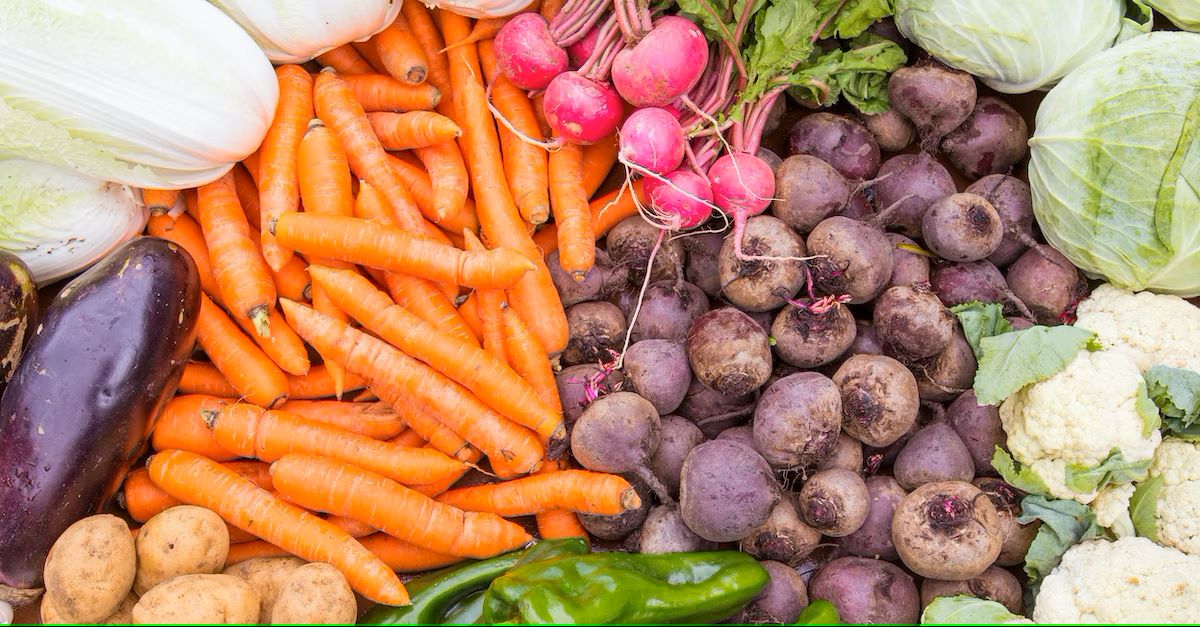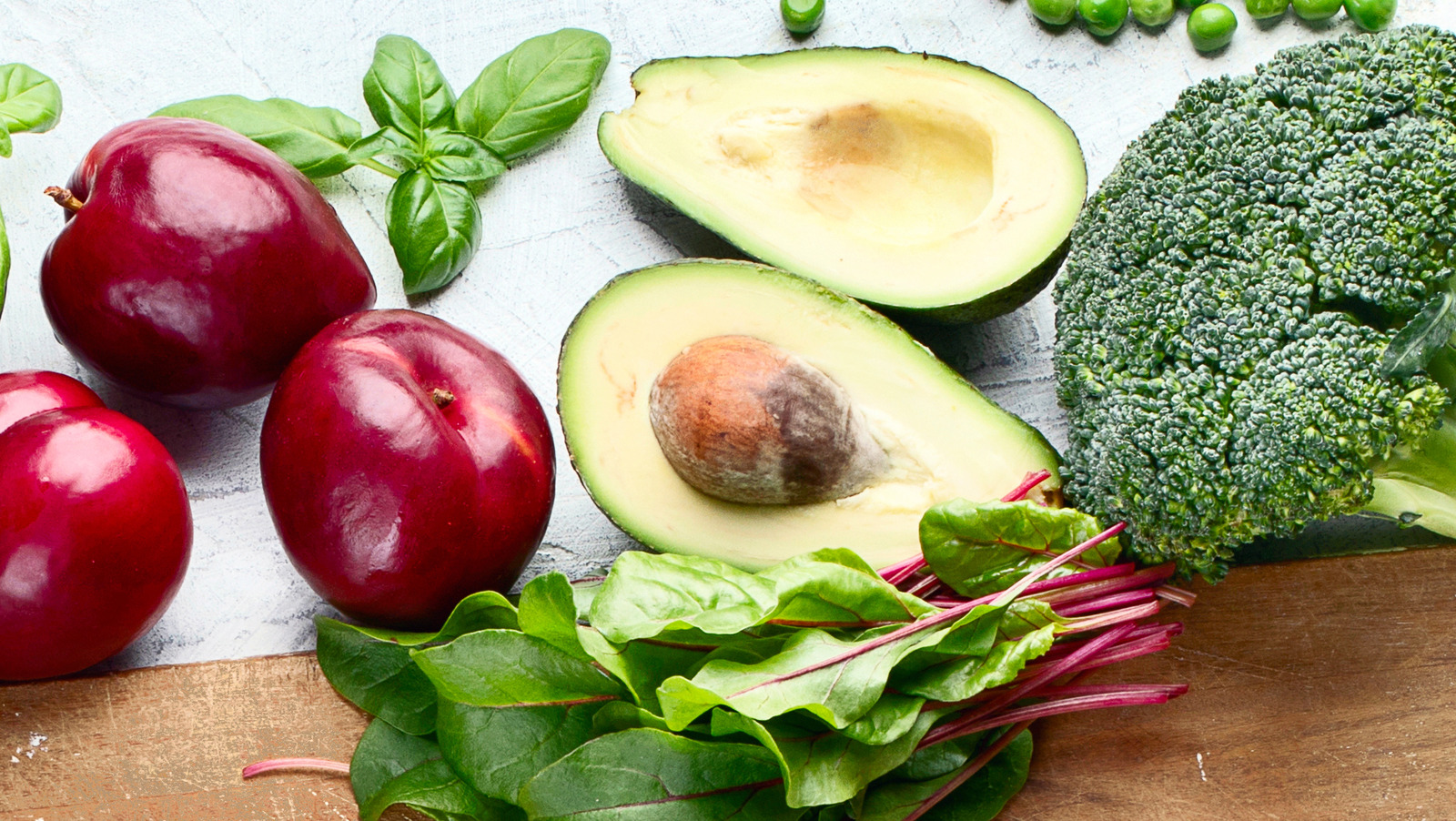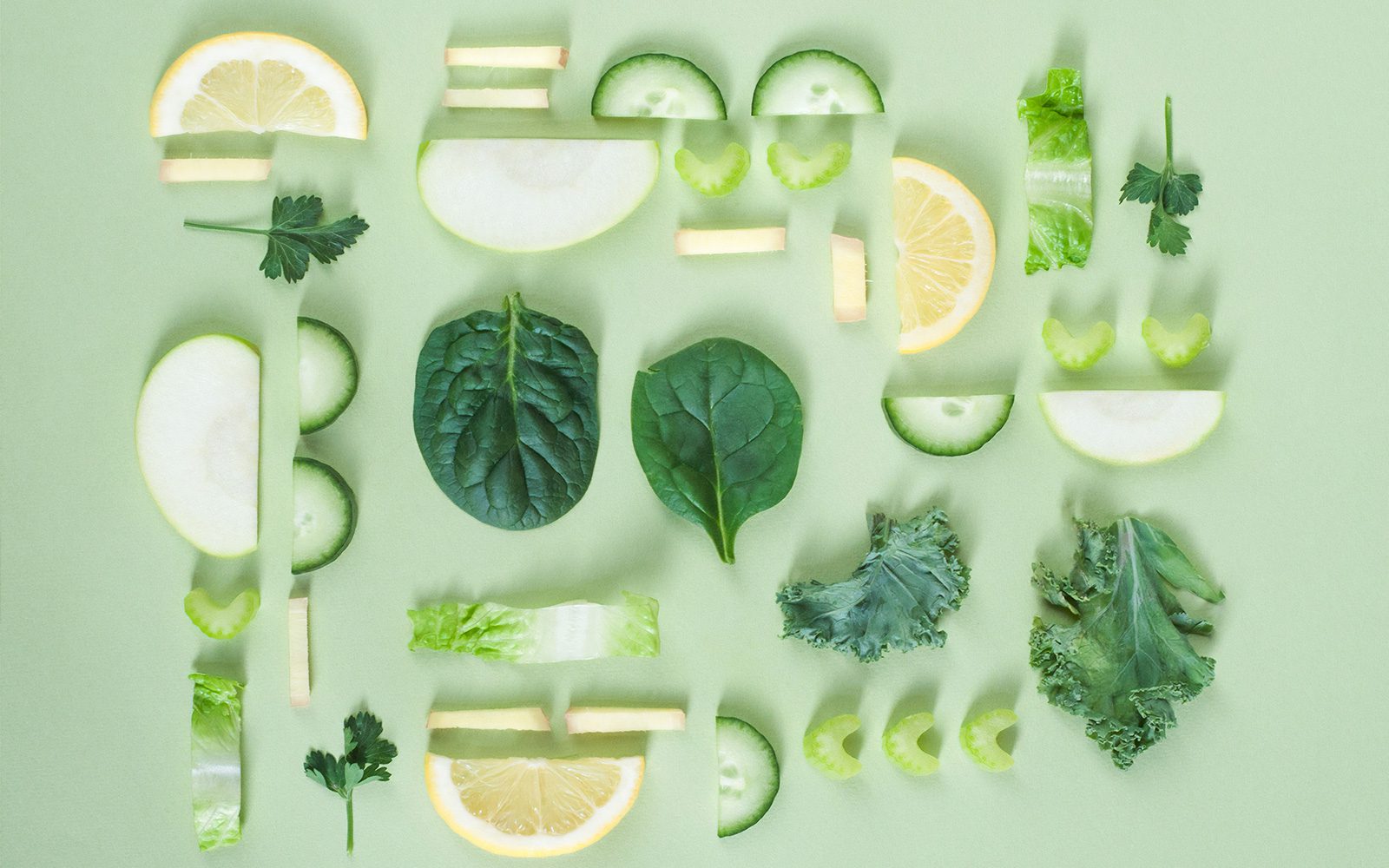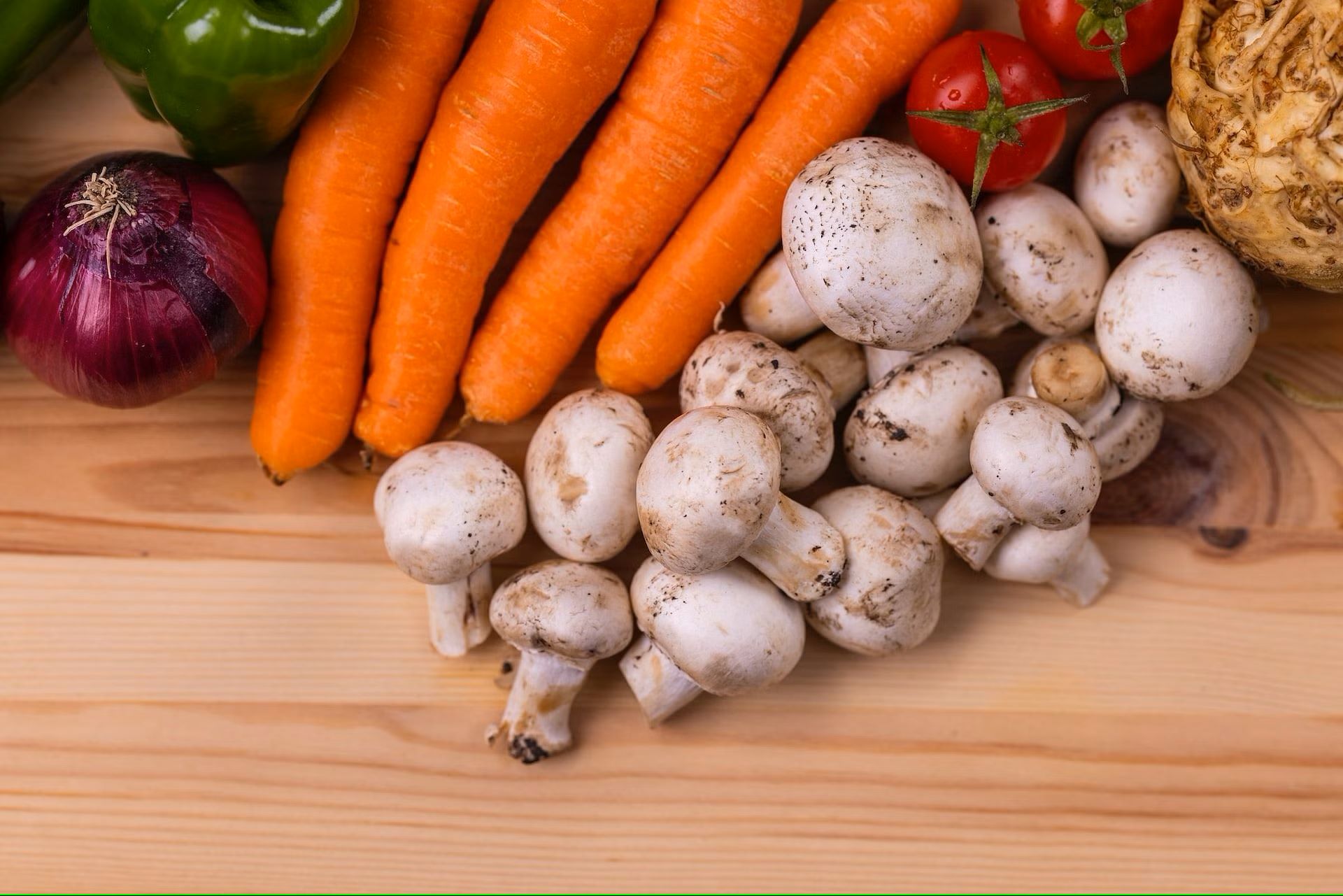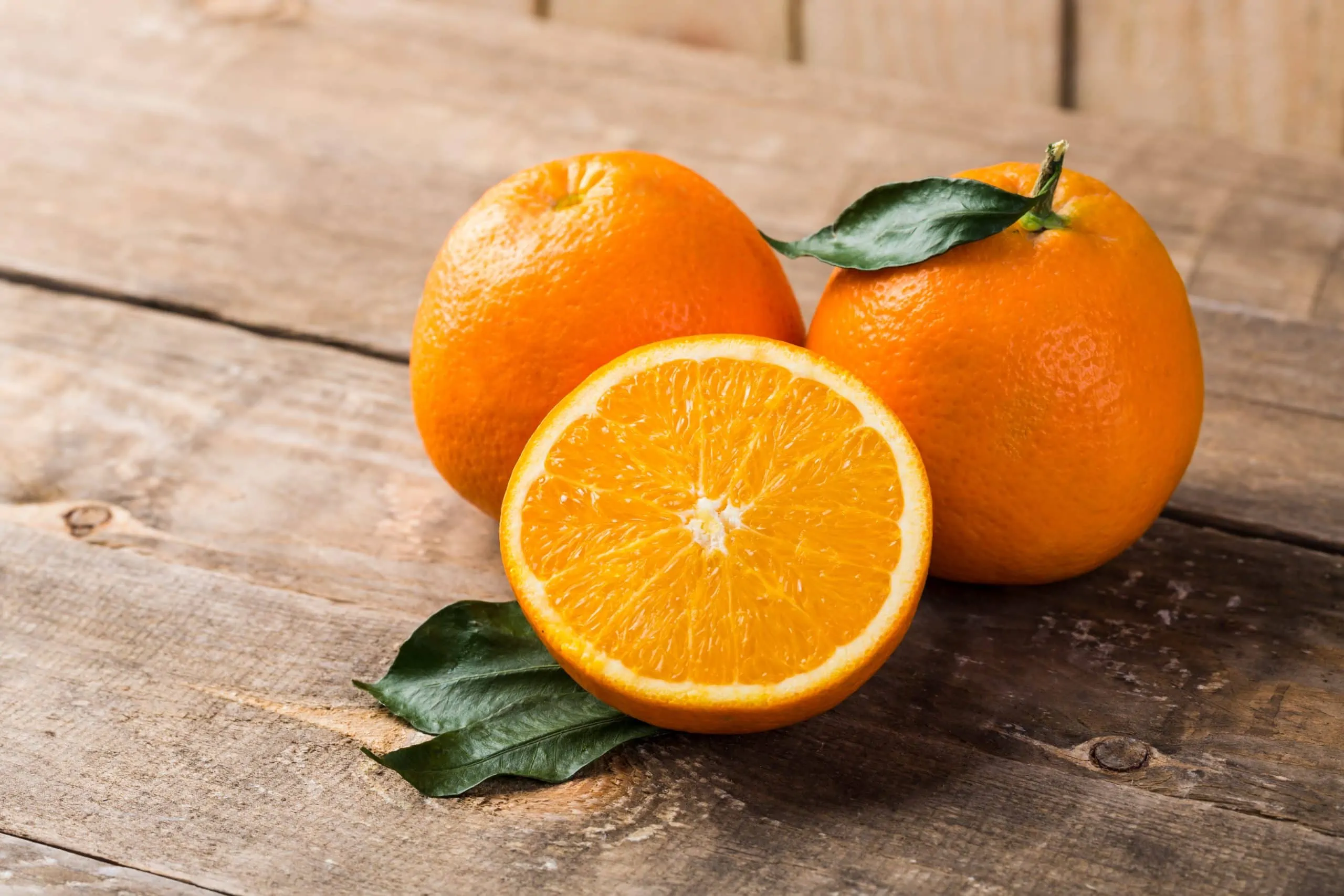Home>Gardening News and Trends>Latest News>What Vegetables Have Potassium In Them


Latest News
What Vegetables Have Potassium In Them
Modified: January 22, 2024
Discover the latest news on vegetables that are rich in potassium, including popular choices like spinach, broccoli, and sweet potatoes. Improve your health with these nutrient-packed options.
(Many of the links in this article redirect to a specific reviewed product. Your purchase of these products through affiliate links helps to generate commission for Chicagolandgardening.com, at no extra cost. Learn more)
Table of Contents
Introduction
When it comes to maintaining a healthy diet, incorporating essential nutrients is key. One such nutrient that plays a crucial role in maintaining proper bodily functions is potassium. Potassium is a mineral that is known for its vital role in maintaining a balance of fluids in the body, proper muscle function, and supporting a healthy heart.
While many people often associate potassium with bananas, there are actually a variety of other vegetables that are rich in this important mineral. These vegetables not only provide essential nutrients but also add flavor and vibrancy to your meals.
In this article, we will explore the top vegetables that are excellent sources of potassium. Whether you’re looking to increase your potassium intake or simply want to incorporate more vegetables into your diet, this list will provide you with options that are both nutritious and delicious.
Before we dive into the vegetables, let’s take a closer look at the benefits of potassium and why it is important to include in your daily diet.
Benefits of Potassium
Potassium plays a vital role in maintaining overall health and well-being. It is an electrolyte that helps regulate fluid balance, nerve function, and muscle contractions. Here are some key benefits of including potassium-rich foods in your diet:
- Heart health: Potassium helps support a healthy heart by maintaining proper cardiac function and promoting blood vessel flexibility. It can help regulate blood pressure levels and reduce the risk of cardiovascular diseases.
- Muscle function: Potassium is essential for proper muscle function, including the contraction and relaxation of skeletal and smooth muscles. It aids in preventing muscle cramps and supports optimal muscle performance.
- Electrolyte balance: Potassium works together with sodium to maintain the balance of electrolytes in the body. This balance is crucial for nerve signaling, muscle contractions, and maintaining overall fluid balance.
- Bone health: Studies have shown that a diet rich in potassium may help improve bone health. It can help reduce the risk of osteoporosis and contribute to maintaining strong and healthy bones.
- Kidney function: Potassium helps support proper kidney function by assisting in the elimination of waste products and regulating fluid balance. It can help prevent the formation of kidney stones and reduce the risk of kidney-related ailments.
- Improved digestion: Potassium-rich foods are often high in dietary fiber, which aids digestion and promotes bowel regularity. Fiber can help prevent constipation and maintain a healthy gastrointestinal system.
It is important to note that while potassium is beneficial for overall health, it is recommended to maintain a balanced intake. Excessive potassium intake can be harmful, especially for individuals with certain medical conditions or taking specific medications. It’s always best to consult with a healthcare professional or registered dietitian for personalized dietary recommendations.
Potassium-Rich Vegetables
Now that we understand the importance of potassium in our diet, let’s explore some of the top vegetables that are rich sources of this essential mineral:
- Spinach: This leafy green vegetable is not only packed with iron but also contains a good amount of potassium. Incorporating spinach into your salads, smoothies, or cooked dishes can be a great way to boost your potassium intake.
- Sweet Potato: Sweet potatoes are not only delicious but also a great source of potassium. These vibrant root vegetables can be enjoyed roasted, mashed, or even made into fries for a potassium-rich side dish.
- Beet Greens: Don’t throw away those beet greens! They are not only edible but also provide a good amount of potassium. Sauté them with some garlic and olive oil for a nutritious and flavorful side dish.
- Acorn Squash: This winter squash variety is not only rich in flavor but also a good source of potassium. Roast it with some olive oil and spices for a comforting and potassium-packed meal.
- Brussels Sprouts: These small, cruciferous vegetables are not only packed with vitamins and fiber but also contain a decent amount of potassium. Roast them or sauté them with some bacon for a delicious and nutritious side dish.
- Swiss Chard: Swiss chard is a leafy green vegetable that is packed with potassium, as well as other essential nutrients like vitamin K and iron. Sauté it with some garlic and lemon juice for a nutritious and flavorful side dish.
- Tomato: Tomatoes are not only versatile but also a good source of potassium. Whether you enjoy them raw in salads or cooked in soups, stews, or sauces, you’ll be adding potassium to your diet.
- Avocado: Avocado is a unique fruit that is not only rich in healthy fats but also a great source of potassium. Enjoy it sliced on toast, mashed for guacamole, or added to salads for a creamy and potassium-rich addition.
- Zucchini: Zucchini is a versatile summer squash that is not only low in calorie but also a good source of potassium. You can spiralize it for veggie noodles, grill it, or add it to stir-fries for a potassium-packed meal.
- Broccoli: Broccoli is not only a nutritional powerhouse with vitamins and fiber but also contains a decent amount of potassium. Steam it, roast it, or add it to stir-fries for a potassium-rich side dish or main course.
By incorporating these potassium-rich vegetables into your diet, you can ensure that you’re meeting your daily potassium needs while enjoying a variety of delicious and nutritious meals.
Spinach
Spinach is a leafy green vegetable that is not only known for its high iron content but also for being a great source of potassium. This nutritious vegetable is incredibly versatile and can be enjoyed in a variety of ways.
One of the easiest ways to incorporate spinach into your diet is by adding it to salads. Whether you’re making a simple green salad or a more elaborate one with fruits and nuts, adding a handful of fresh spinach leaves will give it an extra nutritional boost. Spinach can also be added to smoothies for a nutrient-packed start to your day.
Cooked spinach is another popular option. Sautéed spinach with garlic and olive oil makes for a simple and delicious side dish. It can also be added to pasta dishes, stir-fries, or omelets for an extra dose of potassium and nutrients.
In addition to potassium, spinach is rich in other essential nutrients such as vitamins A, C, and K, folate, and fiber. It is also low in calories, making it a great choice for those looking to maintain a healthy weight.
When buying spinach, look for fresh, vibrant leaves without any signs of wilting or yellowing. It is best to consume spinach within a few days of purchasing it to maximize its nutritional value. If you find that you have extra spinach, you can easily freeze it for later use.
Overall, spinach is a nutritious and versatile vegetable that is not only a good source of potassium but also packed with other essential nutrients. Whether you enjoy it raw in salads or cooked in various dishes, adding spinach to your meals can contribute to a healthy and balanced diet.
Sweet Potato
Sweet potatoes are not only delicious but also a fantastic source of potassium. These vibrant root vegetables are packed with nutrients and bring a natural sweetness to your dishes.
There are countless ways to enjoy sweet potatoes. One simple and popular method is to bake or roast them. Simply scrub the sweet potatoes, pierce them with a fork, and bake at 400°F (200°C) for about 45-60 minutes, or until they are tender. This brings out their natural sweetness and intensifies their flavor. You can enjoy them as a side dish or even as a main course by topping them with various ingredients like black beans, avocado, or salsa.
Mashed sweet potatoes are another crowd-pleasing option. Boil or steam the sweet potatoes until they are fork-tender, then mash them with a little butter, salt, and pepper. This creamy and flavorful side dish pairs well with roasted meats or can be enjoyed on its own.
Sweet potato fries are a healthier alternative to regular fries. Simply cut the sweet potatoes into wedges or strips, toss them in olive oil, season with your favorite spices, and bake them in the oven until they are crispy. Serve them as a side dish or as a snack for a potassium-rich treat.
In addition to potassium, sweet potatoes are also rich in fiber, vitamins A and C, and antioxidants. They have a lower glycemic index compared to regular potatoes, making them a great choice for those watching their blood sugar levels.
When selecting sweet potatoes, choose ones that are firm and have smooth skin. Avoid any with wrinkled or soft spots. Sweet potatoes can be stored in a cool, dark place for several weeks.
Incorporating sweet potatoes into your diet not only provides a good source of potassium but also adds a natural sweetness to your meals. So whether you enjoy them baked, mashed, or as fries, these versatile root vegetables are a nutritious and delicious addition to your plate.
Beet Greens
When purchasing beets, don’t overlook the leafy tops known as beet greens. These greens are not only edible but also a great source of potassium, making them an excellent addition to your diet.
Beet greens have a slightly bitter and earthy taste, similar to Swiss chard or kale. They can be enjoyed in various ways, from sautéing to steaming or even adding them to soups and stews.
One simple and delicious way to prepare beet greens is to sauté them with garlic and olive oil. Heat some olive oil in a pan, add minced garlic, and sauté until fragrant. Then add the beet greens, season with salt and pepper, and cook until they are wilted and tender. This quick and easy side dish pairs well with grilled meats or can be enjoyed as a nutritious addition to your meal.
Another option is to add beet greens to soups or stews. Chop the greens and add them to your favorite soup or stew recipes, allowing them to cook until tender. The beet greens will bring a hint of earthy flavor and a boost of potassium to your dish.
Not only are beet greens high in potassium, but they are also a great source of vitamins A, C, and K, as well as iron and fiber. They contain powerful antioxidants that contribute to overall health and well-being.
When choosing beet greens, look for fresh, vibrant leaves with no signs of wilting or discoloration. The smaller, younger leaves tend to have a milder and more tender texture. If you have beets with the greens still attached, make sure to separate them and store them separately. The greens can be stored in a plastic bag in the refrigerator for up to a week.
Incorporating beet greens into your meals not only provides a good dose of potassium but also adds a nutritious and flavorful element to your dishes. Don’t let these greens go to waste; give them a try and discover a new way to enjoy this often overlooked part of the beet.
Acorn Squash
Acorn squash, with its distinct shape and sweet, nutty flavor, is not only a delicious fall vegetable but also a great source of potassium. This winter squash variety is packed with nutrients and can be prepared in various ways to enhance its flavor and nutritional benefits.
Roasting acorn squash is a simple and popular method that brings out its natural sweetness. Cut the squash in half, scoop out the seeds, and place the halves on a baking sheet. Drizzle them with a little olive oil, sprinkle with salt and pepper, and roast in the oven at 400°F (200°C) for about 35-40 minutes, or until the flesh is tender. Roasted acorn squash can be enjoyed as a side dish or stuffed with flavorful ingredients like grains, vegetables, or even ground meat for a hearty meal.
Another option is to slice the acorn squash into rings and grill or sauté them. This adds a unique, caramelized flavor and a hint of smokiness to the squash. Simply brush the slices with olive oil, season with your favorite spices, and cook them on a grill or in a pan until they are tender and slightly charred.
You can also cube acorn squash and use it in soups, stews, or roasted vegetable medleys. It adds a vibrant color and a rich, creamy texture to these dishes while providing a potassium boost.
In addition to potassium, acorn squash is rich in vitamins A and C, dietary fiber, and antioxidants. It is also a low-calorie vegetable, making it a great option for those looking to maintain a healthy weight.
When selecting acorn squash, choose ones that are heavy for their size and have a hard, dark green skin without any soft spots. Store them in a cool, dark place with good air circulation, and they can last for up to a month.
Incorporating acorn squash into your meals not only adds a delicious and unique flavor but also provides a good source of potassium. So whether you roast it, grill it, or use it in a hearty stew, acorn squash is a versatile and nutritious addition to your culinary repertoire.
Brussels Sprouts
Brussels sprouts, often overlooked as a vegetable, are not only delicious but also a fantastic source of potassium. These miniature cabbage-like vegetables are packed with nutrients and can be prepared in various ways to enhance their flavor and nutritional benefits.
One popular method of preparing Brussels sprouts is to roast them. Simply trim the ends, cut them in half, and spread them out on a baking sheet. Toss them with olive oil, salt, and pepper, then roast in the oven at 400°F (200°C) for about 20-25 minutes, or until they are tender and slightly crispy. Roasting brings out their natural sweetness and adds a delicious caramelized flavor.
Sautéed Brussels sprouts are another tasty option. Heat up some olive oil or butter in a pan, add trimmed and halved Brussels sprouts, and cook them until they are lightly browned and cooked through. Add some minced garlic, salt, and pepper for extra flavor. Sautéed Brussels sprouts make a great side dish or a flavorful addition to salads and grain bowls.
If you prefer a bit of crunch, you can also try making Brussels sprout chips. Simply separate the leaves, toss them with olive oil, salt, and any desired seasonings, and bake them in the oven at a low temperature until they become crispy. Brussels sprout chips make a nutritious and addictive snack option.
In addition to potassium, Brussels sprouts are rich in fiber, vitamins C and K, and antioxidants. They are also low in calories and high in nutrients, making them a great vegetable choice for a healthy diet.
When selecting Brussels sprouts, look for ones that have compact, firm heads and vibrant green color. Avoid any that have yellowing or loose leaves. Brussels sprouts can be stored in the refrigerator for up to a week.
By incorporating Brussels sprouts into your meals, not only will you enjoy their delicious flavor, but you will also benefit from their potassium content and other essential nutrients. So whether you roast them, sauté them, or turn them into crispy chips, Brussels sprouts are a versatile and nutritious vegetable that deserves a place on your plate.
Swiss Chard
Swiss chard is a leafy green vegetable that is not only delicious but also a great source of potassium. It is known for its vibrant colors and distinct flavor, making it a popular choice for adding nutritional value to various dishes.
One common way to enjoy Swiss chard is by sautéing it. Start by rinsing the chard leaves thoroughly and removing the tough stems. Heat a bit of olive oil in a pan, add minced garlic, and sauté until fragrant. Then, add the chard leaves and cook them until wilted and tender. Season with salt, pepper, and a squeeze of lemon juice for extra flavor. Sautéed Swiss chard can be served as a side dish or used as a filling for sandwiches, wraps, or omelets.
You can also enjoy Swiss chard raw in salads. Simply wash and remove the stems, tear the leaves into bite-sized pieces, and combine them with your favorite salad ingredients. The mild bitterness of Swiss chard pairs well with sweet and tangy dressings, nuts, and dried fruits.
Another option is to incorporate Swiss chard into soups, stews, and stir-fries. It adds a vibrant burst of color and a slightly earthy flavor to these dishes. Simply chop the leaves and add them during the cooking process to reap their potassium-rich benefits.
In addition to potassium, Swiss chard is rich in vitamins A, C, and K, as well as iron and fiber. It contains powerful antioxidants that contribute to overall health and well-being.
When selecting Swiss chard, look for fresh, crisp leaves with vibrant colors. Avoid any that are wilted or have yellowing spots. Swiss chard can be stored in the refrigerator, wrapped in a damp paper towel and placed in a loosely closed plastic bag, for up to a week.
By incorporating Swiss chard into your meals, you can not only enjoy its unique flavor and vibrant colors but also reap the benefits of its potassium content and other essential nutrients. Whether you sauté it, enjoy it raw, or add it to your favorite recipes, Swiss chard is a nutritious and versatile vegetable that can elevate your culinary creations.
Tomato
Tomatoes are a versatile fruit that can be used in a myriad of culinary creations. Not only are they known for their bright and tangy flavor, but they are also a great source of potassium. Whether enjoyed fresh or cooked, tomatoes can add a nutritional boost to your meals.
One of the simplest ways to enjoy tomatoes is raw, either in salads or as a topping for sandwiches and burgers. Choose ripe tomatoes that are firm but slightly yielding to the touch. Slice them or dice them, and add them to your favorite salads for a burst of flavor and potassium. Tomatoes can also be paired with fresh mozzarella and basil for a classic Caprese salad.
Cooking tomatoes can intensify their flavor and bring out their natural sweetness. They are a key ingredient in many dishes, such as sauces, soups, and stews. Simmering tomatoes with herbs and spices can create a rich and flavorful tomato sauce that can be used in pasta dishes or as a base for pizzas. Roasting tomatoes in the oven can concentrate their flavors and make them even more delicious.
Another popular way to enjoy tomatoes is in the form of tomato soup. This comforting soup can be made from scratch using fresh tomatoes or even from canned tomatoes for a quick and easy meal. Tomato soup pairs well with grilled cheese sandwiches and is a great option for a potassium-rich lunch or dinner.
In addition to potassium, tomatoes are rich in vitamins A and C, as well as lycopene, a powerful antioxidant. They are also low in calories and a good source of fiber, making them a healthy addition to your diet.
When selecting tomatoes, choose ones that are bright in color and have a sweet aroma. Store them at room temperature, away from direct sunlight, until they ripen. Once ripe, you can store them in the refrigerator for a few days to prolong their freshness.
Whether eaten raw or cooked, tomatoes are a delicious and nutritious way to incorporate potassium into your meals. So, whether you enjoy them in salads, sauces, or soups, tomatoes are a versatile fruit that can enhance the flavor and nutritional profile of your dishes.
Avocado
Avocado is a unique and delicious fruit that is not only famous for its creamy texture and rich flavor but also for its high potassium content. This nutrient-dense fruit is a great addition to any meal, providing not only a boost of potassium but also numerous health benefits.
One of the most popular ways to enjoy avocados is by slicing them and adding them to toast. Simply mash the avocado onto a piece of whole-grain toast and season it with salt, pepper, and a squeeze of lemon or lime juice. This makes for a delicious and nutritious breakfast or snack option.
Avocado can also be incorporated into salads, turning them into creamy and satisfying dishes. Cube or slice an avocado and add it to your favorite vegetable or fruit salads. The creamy texture of the avocado pairs well with various ingredients and adds a nutritional punch. Don’t forget to toss the salad with a zesty dressing to enhance the flavors.
Another popular way to enjoy avocados is by turning them into guacamole. Mash ripe avocados and mix them with diced onions, tomatoes, cilantro, and lime juice for a traditional and refreshing dip. Enjoy it with tortilla chips, use it as a sandwich spread, or use it as a topping for tacos or nachos.
Avocado can also be used as a healthy fat substitute in baking. Replace butter or oil in recipes with mashed avocado to add moisture and a creamy texture to baked goods. This substitution not only adds potassium but also increases the nutritional value of your treats.
In addition to potassium, avocados are a good source of healthy fats, fiber, and vitamins such as vitamin K, vitamin C, vitamin E, and various B vitamins. Their high monounsaturated fat content contributes to heart health and satiety.
When selecting avocados, look for ones that are slightly soft when gently pressed and have a dark green to black skin. Avoid avocados that have bruises or are too mushy. If an avocado is not yet ripe, you can speed up the ripening process by placing it in a paper bag with a ripe banana or apple.
Incorporating avocados into your diet not only provides a good source of potassium but also adds a creamy and nutritious component to your meals. So whether you enjoy them sliced, mashed, or blended, avocados are a versatile and delicious fruit that can elevate the flavor and nutritional profile of your dishes.
Zucchini
Zucchini, a versatile summer squash, is not only low in calories but also a great source of potassium. With its mild flavor and tender texture, zucchini can be enjoyed in a variety of dishes, making it a popular choice for incorporating potassium into your diet.
One of the easiest ways to enjoy zucchini is by simply sautéing it. Heat a bit of olive oil in a pan, add sliced or diced zucchini, and cook until it becomes tender and slightly browned. Season with salt, pepper, and your choice of herbs or spices. Sautéed zucchini can be served as a side dish, added to stir-fries, or used as a topping for pizzas and pasta dishes.
Zucchini can also be spiralized into “zoodles,” a healthy and low-carb alternative to traditional pasta. Use a spiralizer to create long, noodle-like strands from the zucchini, then steam or sauté them until they are just tender. Toss the zoodles with your favorite sauce or use them as a base for salads and stir-fries.
Grilling zucchini is another popular method that adds a smoky flavor to the vegetable. Slice the zucchini lengthwise, brush it with olive oil, sprinkle with salt and pepper, and grill on medium heat until it is tender and grill marks appear. Grilled zucchini can be served as a side dish or used in sandwiches, wraps, or salads.
In addition to potassium, zucchini is a good source of fiber, vitamins A and C, and antioxidants. It is also low in calories and can be a great addition to a balanced and healthy diet.
When selecting zucchini, look for ones that are firm and free of blemishes or soft spots. The smaller zucchinis tend to have a sweeter flavor and tender texture. Store them in the refrigerator for up to a week, but try to use them as soon as possible for the best taste and texture.
Incorporating zucchini into your meals not only provides a potassium boost but also adds a refreshing and mild flavor. So whether you sauté it, spiralize it, or grill it, zucchini is a versatile and nutritious ingredient that can elevate your culinary creations.
Broccoli
Broccoli, a cruciferous vegetable, is not only known for its vibrant green color and unique shape but also for being a great source of potassium. Packed with essential nutrients, broccoli is a versatile and nutritious choice to incorporate into your diet.
One of the simplest ways to enjoy broccoli is by steaming or boiling it. This preserves the vegetable’s crisp texture and brings out its natural flavors. Serve steamed or boiled broccoli as a side dish or incorporate it into stir-fries or pasta dishes for added nutrients and vibrant color.
Roasting broccoli is another popular method that brings out a nutty and more intense flavor. Toss florets in olive oil, sprinkle with some sea salt and black pepper, and roast them in the oven at 425°F (220°C) for about 20-25 minutes, or until they are tender and slightly crispy. This method gives the broccoli a delightful caramelized flavor that adds depth to any meal.
For a quick and nutritious snack or appetizer, try making broccoli tots. Simply pulse raw broccoli florets in a food processor, mix them with bread crumbs, cheese, and spices, shape them into small tots, and bake until golden and crispy. These broccoli tots are a fun and healthy way to enjoy the potassium-rich benefits of this vegetable.
Not only is broccoli rich in potassium, but it is also packed with other essential nutrients such as vitamins A, C, and K, as well as fiber and antioxidants. It is widely known for its health benefits, including its potential to support a healthy immune system and promote digestion.
When selecting broccoli, look for firm florets with a deep green color and compact heads. Avoid any broccoli that has yellowing or wilted florets. Store it in a plastic bag in the refrigerator for up to a week, but try to consume it as soon as possible to maintain its freshness and nutrient content.
Incorporating broccoli into your meals not only adds a boost of potassium but also provides a plethora of health benefits. So whether you enjoy it steamed, roasted, or as part of a delicious recipe, broccoli is a nutritious powerhouse that can elevate the nutritional value of your meals.
Conclusion
Incorporating potassium-rich vegetables into your diet is not only essential for maintaining proper bodily functions but also adds a delicious and nutritious element to your meals. From leafy greens like spinach and Swiss chard to versatile options like tomatoes and zucchini, the variety of vegetables that are high in potassium is extensive.
By regularly consuming these potassium-rich vegetables, you can support heart health, maintain proper muscle function, and promote electrolyte balance. Potassium also contributes to improved bone health, supports kidney function, and aids in digestion.
Remember to choose fresh and vibrant vegetables when shopping, and store them properly to maintain their quality and nutritional value. Experiment with different cooking methods like roasting, sautéing, or steaming to find your favorite ways to enjoy potassium-rich vegetables.
Incorporating these nutrient-dense vegetables into your diet can be as simple as adding them to salads, stir-fries, or grilled dishes. Whether you prefer the earthy flavor of beet greens or the creaminess of avocado, there are plenty of options to suit every palate.
It’s important to note that while potassium is crucial for overall health, it’s essential to maintain a balanced intake and consult with a healthcare professional or registered dietitian if you have specific dietary concerns or medical conditions.
So, take advantage of the wide range of potassium-rich vegetables available, and boost your overall well-being while enjoying delicious and nutritious meals. Make these vegetables a regular part of your diet and savor the benefits they offer for your health.

